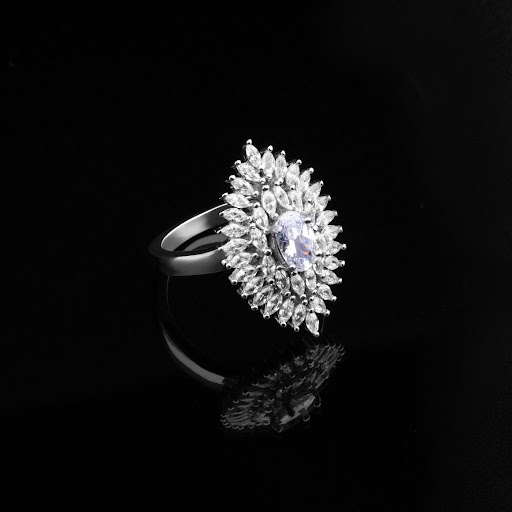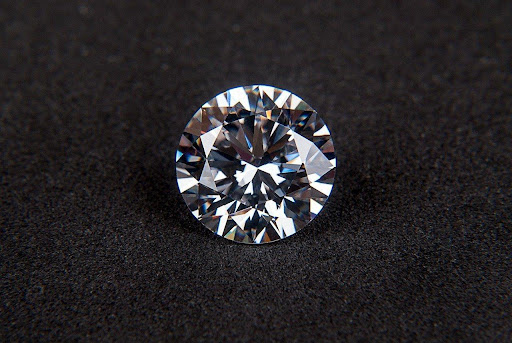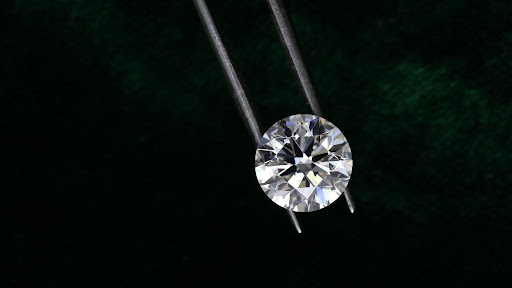The much touted “girl’s best friend,” diamonds truly are a beauty to behold. The sparkle at every angle, the various shapes, colors, and settings, and more, make them almost irresistible. The only thing that usually puts on the buying breaks is the price. While there is a very good reason for the cost of natural diamonds, it can make buying that perfect gift more difficult.
The alternative is buying a lab grown diamond. Despite the fact that they were grown by a scientist instead of pulled from the ground, they are stull the same chemical composition. To the naked eye, there is no discernable difference. The question then arises, are there any other differences? Let’s take a quick look at how each type is obtained before comparing and contrasting.

Table of Contents
What is a Diamond?
Natural diamonds are formed deep in the earth. The Federal Trade Commission defines them as “pure carbon crystalized in the isometric cubic system.” Most stones pulled from the ground aren’t actually pure carbon, containing trace amounts of other materials. Chemicals such as nitrogen and boron change the colors of the gems. Nitrogen makes a yellow color and boron makes them blue. Other foreign materials get trapped during the formation underground.
Extreme heat and pressure created the diamonds and volcanic activity brought them closer to the surface. The type of rock surrounding the earth’s diamonds is called kimberlite pipe. Most of these volcanic pipes don’t hold enough gemstone to make them worth mining. Learn more here about diamonds and where they were first discovered.
What is a Lab Grown Diamond?
These jewels are literally man made. The first industrial grade diamonds were made in the 1950s but the first gem quality ones weren’t made until nearly 20 years later. It wasn’t until many more years later that colorless laboratory versions were introduced into the jewelry market in large enough quantities to fill the demand.
There are two methods for making these man-made gems: a high-pressure method and a chemical method. The pressure method mimics the extreme conditions that originally formed natural diamonds. This method creates a very distinctive shape of gemstone. The chemical method breaks down the molecules of a carbon rich gas into carbon and hydrogen. These atoms are deposited on seeds to produce a square shaped crystal. Either method takes less than a month.
Can a Jeweler Tell the Difference?
The naked eye cannot distinguish the difference between lab grown and natural. They have the exact same chemical make up and look exactly the same even to the old-style diamond detectors and gemological observations. If you want to ask a local jeweler more about lab created diamonds, Calgary and other Albany jewelry stores would love to answer your questions. The rapid manufacturing process can also leave specific marks that a well-trained jeweler looks for while examining the piece.
The gems pulled from the ground do grow a little differently than the ones that grow over a few weeks. Uncut, natural stones have a clear eight directions they grown in, giving them the traditional diamond look with a point in either end. The high-pressure gems have fourteen different grow directions and look highly similar to the 20-sided die used to play roleplaying games. The chemical growth method creates a cubelike structure with one grown direction.

Lab Vs Natural
So, are there other differences between these lab-grown and natural precious stones?
- Durability
- Lab-grown diamonds are still made of the hardest known material on earth. Both natural and laboratory versions are a 10 on the Mohs hardness scale- meaning they are almost impossible to chip.
- Grading
- The institutions that uphold grading standards, like the Gemological Institute of America, hold laboratory gems to the same standards as natural ones. They are grown and therefore can take on some of the same flaws as natural ones, flaws that affect the clarity and shine. All stones are graded by their cut, clarity, color, and carat. Since they are held to the same standards, a flawless lab grown gem is just as beautiful as a flawless natural one. Visit GIA.edu to learn more about how gems are graded.
- Price
- A natural gem is sold for 30%-50% more than a lab grown one of similar size and clarity. The lower price doesn’t make the laboratory ones of any less quality. It just means that they were easier to obtain.
- The market does consider lab grown gems to be of lower value due to them being significantly less rare than natural ones. It is believed that there is a finite supply available for mining and rarity always drives up the value and price. If the market is full of manufactured stones, it might drive down the resale value of your lab grown stone.
- It is important to note that cubic zirconia and moissanite might seem similar but are not the same. They don’t have the shine or durability and are sold at much lower prices.
- Shopping Ethically
- Lab-grown stones are also popular for their ethical and sustainable origins. While companies are striving to improve the sustainability of mining resources, it is still an invasive process that can be damaging the area around it.
- There are also countries that have different forces mining these precious resources and selling them to fund a civil war. These are referred to as blood diamonds. The people obtaining and selling these stones are robbing the surrounding populations of the chance to support their communities with estimated eight billion dollars’ worth of natural resources.
- There is nothing wrong with buying a natural gemstone, it just takes proper questioning and research to ensure you are buying responsibly. Companies that mine sustainably and support the surrounding communities, and jewelers that refuse to buy blood diamonds deserve to be rewarded with sales. Just be sure you are giving your money to the businesses that care, instead of the ones taking advantage.
In the end, Lab created diamonds are just as beautiful as natural ones. They have the same shine, the same durability, and are graded exactly the same. The only difference is scarcity and origin. Now that you know, you can make an informed decision while picking out that perfect ring.

